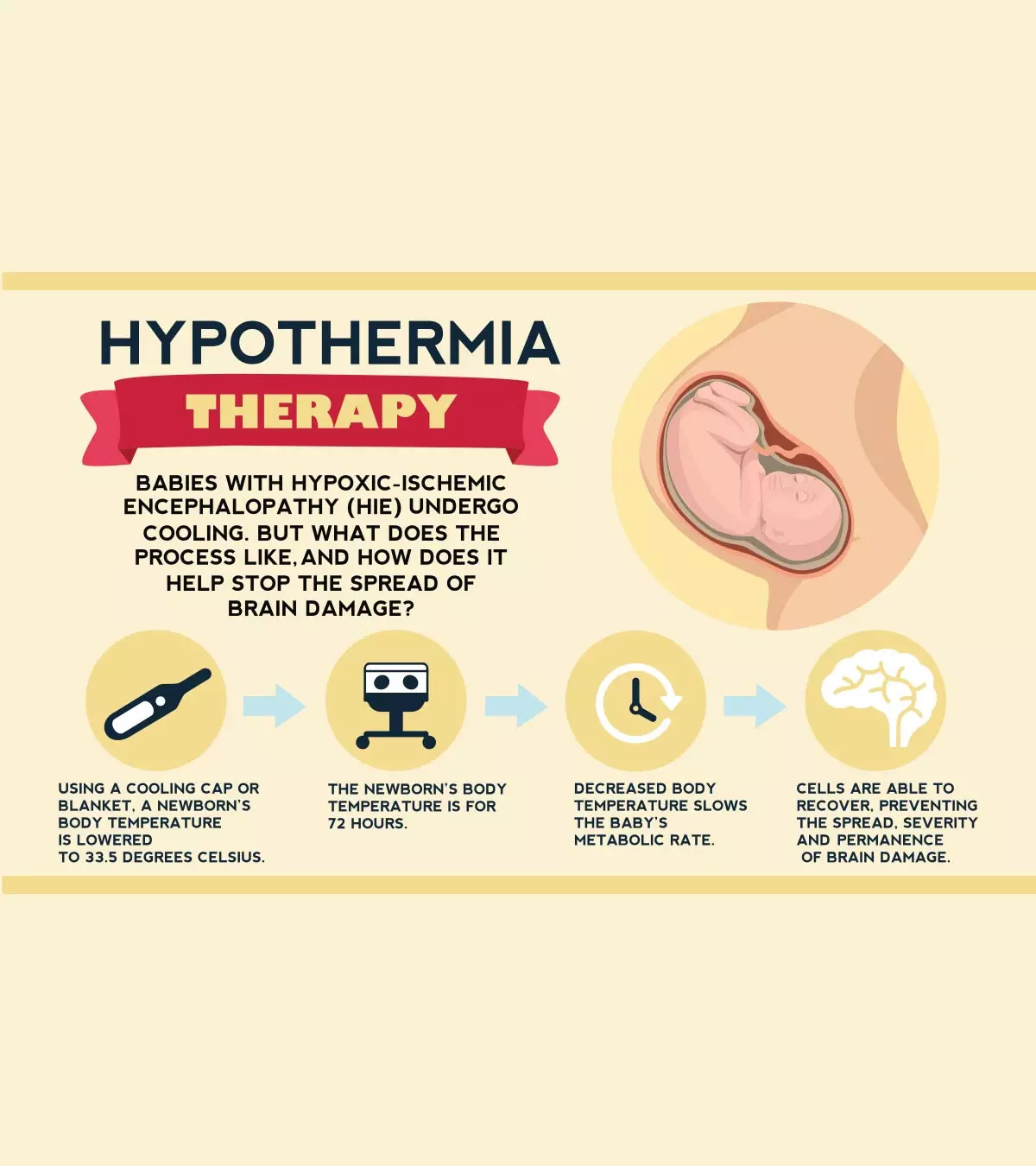

Image: Shutterstock
Preterm labor occurs when your regular contractions start before the scheduled 37th week of pregnancy. These contractions also cause the cervix to dilate and prepare the birth canal for the baby’s delivery. Studies have suggested that one of the principal reasons for infant mortality is preterm labor, leading to premature birth (1). But it is also true that 15 million babies are born preterm every year. You may continue reading to know more about preterm labor, its causes, signs, diagnosis, treatment, and prevention.

What Is Preterm Labor?
Preterm labor occurs when regular contractions start before 37 weeks of pregnancy followed by cervical dilation. It can be categorized based on when it happens (1) :
- Less than 28 weeks — extremely preterm
- 28 to 32 weeks — very preterm
- 32 to 37 weeks — late preterm
If the baby’s birth happens between the 20th and 37th week, then it is termed preterm birth. Needless to say, the earlier the labor, the more problematic it is.
What Are The Causes Of Preterm Labor?
Let’s see the reasons here (2):
- Spontaneous preterm labor: It is an unplanned delivery that happens before the 37th week of pregnancy. While the actual reasons for such preterm labor are not known, an infection or inflammation might trigger it.
- Medically indicated preterm birth: In case of a medical condition like preeclampsia, the doctor recommends preterm delivery by inducing labor.
However, if there are no serious medical issues, the doctor might use additional interventions to keep the baby inside the womb for as long as possible. In such cases, the health of the mother and the baby is closely monitored.
If it is not possible to hold the pregnancy for long, the doctor may consider giving steroids to mature the lungs of the fetus.
- Non-medically indicated (elective) preterm delivery: It is the labor induced or a c-section carried out even when there is no medical emergency. Such preterm delivery is usually not recommended. Studies have shown that babies delivered during the 37th and 38th weeks by inducing labor may have poor health outcomes compared to those delivered during the 39th week or later (3).
Preterm labor can happen at any time, and you may not be prepared for that. But you can know if you are at risk.
Who Are At Risk Of A Preterm Labor?
You are at a higher risk if you relate to one or more of the below factors (4):
- Being overweight or underweight before pregnancy
- Improper prenatal care
- Physically stressful work
- Smoking, alcohol consumption or illicit drug intake during pregnancy
- Maternal health issues like high diabetes, blood pressure, preeclampsia, or thyroid
- Certain birth defects in the baby
- In-vitro fertilization pregnancy
- Twin or multiple pregnancies
- Blood clotting problems
- Excess or insufficient amniotic fluid
- Vaginal infections like bacterial vaginosis and trichomoniasis, chlamydia infection, nongenital tract infection (asymptomatic bacteriuria, pneumonia, appendicitis)
- Urinary tract infections and sexually transmitted infections
- Uterine rupture in the previous C-section delivery
- Removal of uterine fibroid
- Reproductive organ abnormalities like short cervix or shortening of the cervix during the second trimester instead of the third trimester
- Placenta previa
- A history of premature birth
- Getting pregnant within six months of last pregnancy
- Women younger than 18 and older than 35 years of age
- Lifestyle and environmental factors
- Exposure to environmental pollutants
- Domestic violence, sexual, physical, emotional abuse, and lack of social support
The more the risk factors, the higher is your chance of having preterm labor; and this is not good for the baby.
What Are The Complications In Preterm Babies?
The US Centers for Disease Control and Prevention identifies the below health risks for babies born preterm (5) :
- Low birth weight of less than 2,500g or 5.5lb
- Breathing difficulties, including:
a. Respiratory distress syndrome, a condition that arises due to the lack of surfactants in the lungs that makes the air sacs close
b. Chronic lung disease due to tissue injury in the long-term
c. Air leakage out of the lung spaces
d. Incomplete lung development
e. Stopped breathing or apnea - Underdeveloped organs and vision problems
- Higher risk of learning disabilities
- Behavioral problems
- Temperature instability — the inability to regulate body temperature due to low body fat
- Cardiovascular problems such as:
a. Patent ductus arteriosus (PDA), a condition that inhibits blood supply to the lungs
b. Too high or low blood pressure
c. Low heart rate (often occurs with apnea) - Blood and metabolic conditions that include:
a. Anemia, which may require blood transfusion
b. Jaundice due to underdeveloped liver and immature gastrointestinal function
c. Very low or high level of minerals like calcium and substances like glucose in the blood
d. Immature kidney function - Gastrointestinal complications, including:
a. Feeding difficulties – inability to suck and swallow
b. Poor digestion
c. Necrotizing enterocolitis (NEC), a serious intestinal disease - Neurological complications:
a. Intraventricular hemorrhage (bleeding inside the brain)
b. Periventricular leukomalacia, a condition that causes softening of brain tissues around the ventricles, which contain cerebrospinal fluid
c. Poor muscle tone
d. Seizures due to hypoxic injury to the brain
e. Retinopathy of prematurity (ROP) – causes abnormal growth of the blood vessels in the retina, which can result in the detachment of retina from the back of the eye causing blindness - Infections that might require antibiotic treatment
The chances of these complications may be reduced if the signs of preterm are recognized and the problem diagnosed in time.
What Are The Symptoms Of Preterm Labor?
According to the American College of Obstetricians and Gynecologists, the below signs indicate premature labor (6):
- Increased vaginal discharge
- Change in the type of discharge i.e., watery, mucus, or bloody (discharge in pink or tinged with blood)
- Vaginal bleeding or spotting
- Pain in the lower abdomen
- Abdominal cramps with or without diarrhea
- A pressure felt in the pelvic area
- Lower back pain
- Frequent, painless uterine contractions
- Water break (with a gush or trickle of fluid)
Some of the symptoms, such as contractions might look similar to the ones you have been having throughout your pregnancy. Vaginal bleeding throughout pregnancy is not a normal symptom.
- However, vaginal bleeding is different if it has a tinge of pink or red color in it, and is accompanied by water break or contractions.
- The labor contractions are different from Braxton Hicks in that the latter are infrequent, short-lived and reduce, while the former gradually increase in frequency and intensity.
You do not have to panic every time you have false contractions. But if you experience any of these symptoms, then seek a diagnosis.
How Is Preterm Labor Diagnosed?
The below tests and procedures help determine if you are having a preterm labor (7):
- History: A reliable medical history of the symptoms is the first step to assess whether you are experiencing a preterm labor or not.
- Perabdominal examination: By doing an abdominal examination your doctor might be able to asses the baby’s growth as well as feel for the contractions.
- A pelvic exam to understand uterus: Not recommended always but if a perabdominal examination is suspicious of an established labor, then a per vaginal examination is required to asses the cervix to know the status of the membranes and labor.
- Ultrasound to check the baby’s size: It helps determine the size, weight, age, and position of the baby as well as the level of amniotic fluid around the baby and the placental location.
- Uterine monitoring: It is done using tocometer to measure the duration and spacing between your contractions.
- Lab tests for infections: They include a swab test of the vaginal secretions to check for any infections and fetal fibronectin. Fetal fibronectin is a protein secreted by the uterus and acts as glue to attach the fetal sac to the lining of the uterus. The disintegration of this glue could indicate labor.
If the diagnosis hints at a possible preterm delivery, then the doctor will try to prolong the pregnancy through various treatment methods.
How Is Preterm Labor Managed?
The treatment of preterm delivery depends on its cause and after weighing the pros and cons of delaying the labor.
If preterm labor starts before 34 weeks of pregnancy, then the doctor will recommend hospitalization, and you will be put on medications (8):
- Antibiotics in case of water break: If preterm labor is associated with infection or inflammation, and leads to premature rupture of membranes (water break), the doctor will prescribe the antibiotic.
- Corticosteroids for lung maturity: The steroid injection is given between 24 and 34 weeks of pregnancy to speed up the process of your baby’s lung maturity. This medication could also be recommended during the 23rd week or up to the 36th week of pregnancy if the doctor suspects that you might deliver in the next seven days.
- Tocolytics to control contractions: The medication is given to temporarily stop the contractions of preterm labor. This provides the window for the steroids or other drugs to act. Tocolysis is done using various drugs such as Nifedipine that prevents the calcium influx required for myometrial cell contraction, or Atosiban that controls the activity of oxytocin.
Tocolysis is not recommended for women with pregnancy-induced high blood pressure.
Betasympathomimetic drugs ritodrine, terbutaline and salbutamol are commonly used to inhibit uterine contractions. But studies have found that calcium channel blockers (Nifedipine) could be more effective than other types of tocolytic medications (9).
These treatments may or may not prolong your pregnancy. But if you follow some preventive measures, your chances of having preterm labor might come down.
What Are The Preventive Measures For Preterm Labor?
You may try the below measures to prevent preterm labor and have a healthy pregnancy:
- Adopt a healthy lifestyle. Avoid smoking and taking illicit drugs during pregnancy.
- Do not take any medications without your doctor’s permission.
- Have a decent gap between two pregnancies because a spacing of less than six months can increase the risk of preterm labor.
- If you are in a high-risk zone, the doctor may recommend a weekly shot of progesterone hormone, known as 17 alpha-hydroxyprogesterone caproate (Makena) (10).
- Stressful physical activities can also lead to preterm labor. Therefore, talk to your healthcare provider before starting on such activities.
- Keep tracking your levels regularly if you have gestational diabetes or high blood pressure.
- Have control over negative emotions such as anxiety.
- If you have contractions, then drink a lot of fluids. They could be false contractions, so wait for some time to see if the contractions continue.
Do not miss any prenatal visits. If you notice any peculiar signs or symptoms, then tell your doctor about them. This will help them foresee preterm labor.
What To Expect During Your OB Visit
In case of any symptoms or signs of preterm labor make sure to inform your doctor right away. Here is what might happen during the visit.
What to expect from the doctor?
Your doctor might ask you some questions such as:
- When did you notice the signs of contraction?
- Do you feel any contractions now?
- How many contractions did you feel in an hour?
- Did you notice any change in the vaginal discharge?
- Are you suffering from fever or any infectious disease?
- Do you have a history of miscarriages or cervical or uterine surgeries?
- Do you smoke? If so, how much?
How can you plan your appointment?
- Call the hospital and ask if you can meet the doctor immediately.
- Make sure to take your partner or a friend along. In case of any signs of preterm labor, you might not be in a state to focus on what the doctor is saying. The person accompanying you can take down all the information.
- Jot down all the queries that you have in mind and get them cleared during the visit.
Here are some basic questions you can ask the doctor:
- Am I in labor?
- What can I do to prolong my pregnancy?
- What treatments could help my baby if I have preterm labor?
- What are the symptoms I should look out for?
- How soon should I contact the hospital?
- What are the possible risks if my baby is born prematurely?
Frequently Asked Questions
1. Does preterm labor mean early delivery?
Preterm labor may lead to an early, preterm delivery if it continues for long or when the doctor feels that an early delivery would be ideal for the safety of the baby and the mother (6).
2. Can too much activity cause preterm labor?
Engaging in high-intensity physical activities might increase the risk of preterm labor and complications such as miscarriage (11).
3. How does preterm labor affect the mother?
If preterm labor leads to preterm birth, it may increase the risk of fatigue and anxiety in the mother (12).
4. How long can preterm labor be delayed?
Doctors may use medications, such as corticosteroids and tocolytics, to delay preterm labor for a few hours to days (13).
5. Can preterm labor stop on its own?
Preterm labor may stop on its own in rare cases (6).
Preterm labor is one of the key reasons for infant mortality. The risks of preterm labor include being overweight or underweight before pregnancy, improper prenatal care, alcohol consumption, drug intake, smoking during pregnancy, and exhausting workouts. So, if you notice symptoms of preterm labor such as increased vaginal discharge, vaginal bleeding or spotting, or lower back pain, consult your doctor. They may recommend hospitalization or medications, such as antibiotics, corticosteroids, and tocolytics. You can also prevent preterm labor by adopting a healthy lifestyle, ensuring the pregnancy gap, and avoiding stressful physical activities.
References
- Preterm birth.
https://www.who.int/en/news-room/fact-sheets/detail/preterm-birth - What causes preterm labor and birth?
https://www.nichd.nih.gov/health/topics/preterm/conditioninfo/causes#top - Avoidance of Nonmedically Indicated Early-Term Deliveries and Associated Neonatal Morbidities.
https://www.acog.org/clinical/clinical-guidance/committee-opinion/articles/2019/02/avoidance-of-nonmedically-indicated-early-term-deliveries-and-associated-neonatal-morbidities - What are the risk factors for preterm labor and birth?
https://www.nichd.nih.gov/health/topics/preterm/conditioninfo/who_risk - Preterm Birth
https://www.cdc.gov/reproductivehealth/maternalinfanthealth/pretermbirth.htm - Preterm Labor and Birth.
https://www.acog.org/womens-health/faqs/preterm-labor-and-birth - Diagnosis of Preterm Labor and Delivery.
https://winchesterhospital.org/?id=101360 - Jayanta Chatterjee et al.; (2007); The management of preterm labour
https://www.ncbi.nlm.nih.gov/pmc/articles/PMC2675479/ - Flenady V et al.; (2014); Calcium channel blockers for inhibiting preterm labour and birth.
https://www.cochrane.org/CD002255/PREG_calcium-channel-blockers-for-inhibiting-preterm-labour-and-birth - Tracy A Manuck; (2017); 17-alpha hydroxyprogesterone caproate for preterm birth prevention: Where have we been, how did we get here, and where are we going?
https://pubmed.ncbi.nlm.nih.gov/28947068/ - Physical Job Demands– Reproductive Health.
https://www.cdc.gov/niosh/topics/repro/physicaldemands.html - Jane Henderson et al.; Impact of preterm birth on maternal well-being and women’s perceptions of their baby: a population-based survey
https://www.ncbi.nlm.nih.gov/pmc/articles/PMC5073632/ - Treatments for preterm labor.
https://www.marchofdimes.org/find-support/topics/birth/treatments-preterm-labor
Community Experiences
Join the conversation and become a part of our nurturing community! Share your stories, experiences, and insights to connect with fellow parents.
Read full bio of Dr. Asmita Kaundal
Read full bio of shreeja pillai














